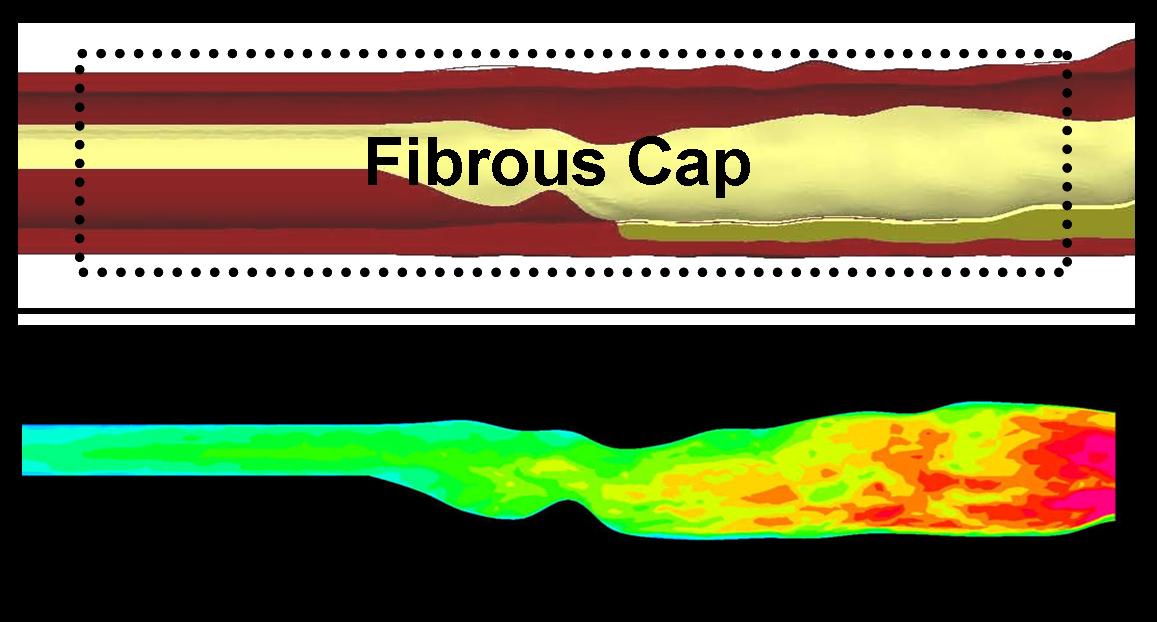Coronary artery disease (CAD) is the single largest killer of American males and females, and total costs directly and indirectly attributed to the disease are estimated to be $142.1 billion in 2005. One important manifestation of this disease, the vulnerable plaque, is characterized by a thin fibrous cap covering a lipid core, and is responsible for sudden cardiac death in patients with no visible symptoms. This has been imaged extensively by both invasive and non-invasive methods for characterizing atherosclerotic lesions and the development of diagnostic and drug treatment analysis techniques. However, there is lack of in vivo, specifically imaging, techniques to accurately predict potential sites of vulnerable plaque rupture. Therefore, investigators have to resort to examination of histological samples or Finite Element (FE) techniques, based on imaging of the atherosclerotic lesion. Intravascular Ultrasound (IVUS) images of atherosclerotic plaques, provided by the Division of Cardiovascular Medicine at Stony Brook University, are processed by the Vulcano virtual histology software, which classifies various regions of the plaque according to tissue type. We use the MATLAB and Gambit software packages to define and recreate a 3D model of the plaque from these images. The ADINA fluid structure interaction (FSI) package is then utilized to simulate flow through the coronary artery of which the vulnerable plaque is a part. Our long term objective is to examine the effect of microcalcification and fibrous cap thickness on the risk of vulnerable plaque rupture.

